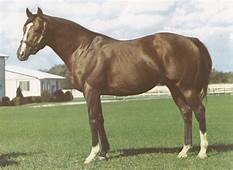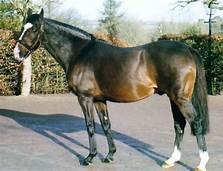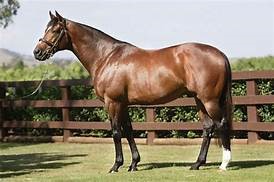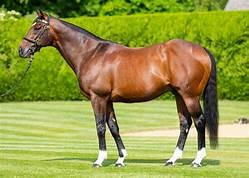Our Approach To Breeding

In principle, breeding thoroughbreds is simple. You decide which mares to purchase or keep for breeding; you assess which stallions are most likely to produce successful racehorses; and you try to match the racecourse abilities, physical qualities and temperament of one with those of the other, so that with more than a little luck they produce a foal with the best attributes of each, ready to develop into a top-class racehorse.
The first of these decisions is, though, the most fundamental: which mares do you choose for the stud? Following a great deal of analysis involving studies of the produce of thousands of broodmares, we are confident of certain principles we might well have come up with in the first place!
On average, the best racemares are likely to be the best broodmares; whilst once a mare has produced one good horse she is far more likely to produce another than is a mare who has not yet done so. Other significant factors are the sire of the mare (the broodmare sire of the foal), who should be proven as a producer of good horses, and the record of the mare’s dam in producing good racehorses.
Many pedigree students go well beyong these simple approaches and seek to explain every appearance of a good horse in terms of inbreeding in the third, fourth or fifth generations; the multiple presence of famous ancestors more distantly; or the repetition of crosses that have succeeded several generations in the past. My studies support the simple premise that the third generation of a pedigree is not all that significant and considerations going beyond that represent ancient histoty.
You can seek to explain a horse’s ability by looking at such things and no-one will ever be able to prove you wrong, but hoping to repeat the appearance of a great horse by duplicating relatively distant patterns of inbreeding, line-breeding or sire / broodmare sire crosses in his pedigree is highly unlikely to succeed.
So Eskdale Thoroughbreds has a straight-forward policy in deciding which mares to use for breeding. They are either:
- Good NH racemares or proven broodmares, generally eligible to the TBA Elite Mares Scheme (requiring NH Official Ratings of at least 130 for racemares and similarly challenging ratings for broodmares. This scheme provides free or heavily subsidised nominations for such mares to visit British stallions suited to NH breeding); OR
- Sisters, half-sisters or daughters of top-class (currently all Grade 1 winning) NH racehorses; OR
- In one case a Flat Group 1 winner having the size and strength of a Jump mare, who we were fortuitously able to buy at a reasonable price.
This way we know that they are likely to possess the genes needed to produce good NH horses, so long as they are mated to high-class stallions that suit them in conformation and temperament, and if the right sperm meets up with the right egg. We have not yet found a way to affect the last point, but we do try to control the first.
As to the choice of stallions, we believe that (until such time as a stallion has proven his ability to sire successful Jumps horses – which may not be evident until he is in his teens) high-class middle-distance horses, by top-class stallions out of well-bred broodmares, and having good size, scope, limbs and walk, are the most likely to breed good NH horses – and we have statistical evidence to prove this. Accordingly, we seek out the most suitable ones we can afford. Sometimes we even get it right!
However, you can read more about the good, the bad and the ugly of our stallion and mare selections over the past 20 years in the Memories section of the website.
***************************************************************************************************************
… And now for something completely different…

Thoroughbred Horse Breeding




A Voyage of Discovery by Bryan Mayoh
If you’re looking to while away your hours of what is meant to be relaxation by getting into the depths of thoroughbred breeding, you might consider the magnum opus whose title is given above. This discusses the many aspects of the subject that have fascinated me over the years, and includes original research into what factors of a horse’s pedigree affect his racing ability, and how important each is.
A summary of the content of this book is given below. Hard copies are available from the author, at cost price (£30 + £5 postage & packing) – please contact the author via the details given on this website. It contains lots of pages of content (468 to be precise), lots of facts, lots of conformation photos of important horses in thoroughbred breeding, and (hopefully) lots of insights. It really is a ripping good read for the dedicated follower of breeding facts, even if I say so myself.
‘Thoroughbred Horse Breeding: A Voyage of Discovery‘ simply seeks to ‘do what it says on the tin’, namely journey through multiple aspects of thoroughbred breeding to discover what factors do or do not matter when it comes to breeding high-class racehorses – whether Flat or Jumps; sprinters, milers, middle-distance horses or stayers; chasers or hurdlers.
Essentially, it has three principal components:
• It provides background to the great racehorses, stallions and mares throughout thoroughbred
history, showing how the thoroughbred has evolved all over the world;
• It describes various notions, ideas and theories promulgated over the years on how outstanding
racehorses might be bred;
• It reports the author’s objective studies of which factors really should be considered, and how
important they are when seeking to breed high-class racehorses.
Accordingly, the approach really is one of exploration, for the author as much as the reader, of looking
into facts and ideas, and of undertaking analyses of these facts and ideas to see what they can tell us
about the principles, probabilities and occasional peculiarities of thoroughbred horse breeding.
The views expressed by the author within these pages will not be infallible, for he is yet to meet anyone
whose views are; but they will be based on objective analysis wherever possible; and they will be
explained as coherently as he is able.
In order to bother reading this book at all, you need to be seriously interested in the subject. To get the
most from its content, you need to read it carefully and mull over what it seeks to convey. If you do
this, then all that might hold you back from becoming a successful thoroughbred breeder will be
whether, as well as the intelligence and judgement so clearly demonstrated by your getting that far, you
also have the financial assets and determination to overcome the inevitable problems you will encounter along the way – and also enjoy a significant amount of luck!
TABLE OF CONTENTS
Preface
1. Introduction
2. The Development of Modern Flat-Racing
3. The Evolution of the Modern Thoroughbred
4. Some Breeding Concepts and Theories
5. The Influence of Great Producers in Thoroughbred Pedigrees
6. How Much Do ‘Nicks’ Affect Flat-Racing Ability?
7. How Much Does Inbreeding Affect Flat-Racing Ability?
8. Assessing and Predicting the Performance of Flat Stallions
9. What Pedigree Factors Matter in Breeding Flat racehorses?
10. National Hunt Racing and Breeding
11. Assessing and Predicting the Performance of NH Stallions
12. What Pedigree Factors Matter in Breeding NH Racehorses?
13. The Role of Upbringing in Producing High-Class NH Horses
About The Author
Bryan Mayoh has been fascinated by thoroughbred racing and breeding from the age of eleven, always from the perspective of seeking to identify outstanding racehorses, understanding the part played in their successes by the way they were bred, and then following their results when they in turn are used to produce the racehorses of the future.
Originally, Bryan studied Natural Sciences at Oxford University, where he took 1st Class Honours with a Distinction in Statistics, followed by a Doctorate awarded for a theoretical study of complex molecules that today he finds totally incomprehensible, using an enormous computer whose processing power would now be dwarfed by that of the average mobile phone. He began his business career in IT, where his interests lay in applying logical processes to solve business problems. He continued this approach, of ascertaining the facts, defining the principles and proposing optimal solutions, throughout a broader business career. This worked sufficiently well that he was eventually able to begin breeding horses.
Having initially developed his understanding of livestock breeding by 25 years / generations of producing top-class exhibition cavies (guinea-pigs), Bryan began to concentrate on his real love, thoroughbreds, over 20 years ago. Not owning the oil-wells, internet platforms or business empires that would allow him to participate in top-level Flat breeding, he concentrated on Jumps breeding – which with a few notable exceptions offers a much friendlier ambience anyway. Along with his former wife, Sandra, and latest wife, Dorte, he has bred a number of good NH horses from relatively limited numbers of mares, most notably Sizing John, winner of the Cheltenham, Irish and Punchestown Gold Cups.
This book aims to combine elements derived from the above background into what is hoped will prove interesting reading for those that share a similar passion for thoroughbred breeding, a desire for opinions that are based on the logical evaluation of facts, and a sense of humour!
